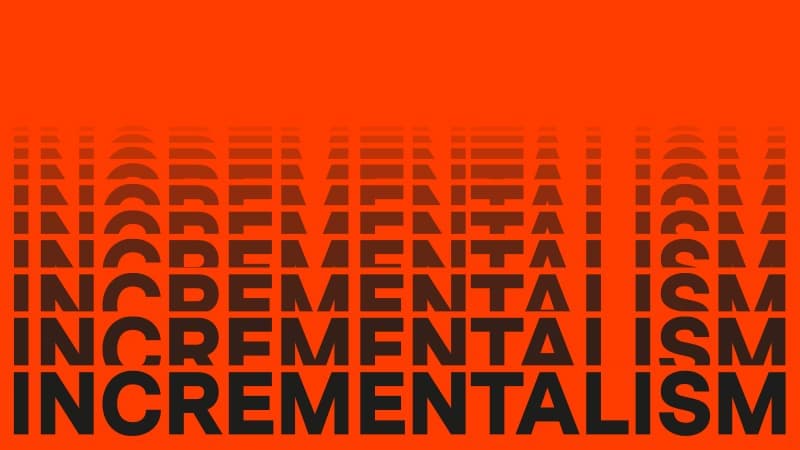Building a Successful Property Website
Our cities are growing. They’re growing up, they’re growing out, they’re even growing under.
Property developers are responding to the ever-increasing number of people choosing to live in urban areas, often building on the tightest of sites. Cue the continual rise of the multi-storey, inner city development. These developments tend to host multiple apartments spanning a variety of price points, from affordable housing up to luxury penthouses.
When it comes to marketing the units, developers need to communicate the property information in a clear and compelling way, while encouraging prospective buyers to get in touch or book a viewing. This is where the brand comes in. In what can be a competitive market, a strong brand gives the property development a unique personality that sets it apart from the crowd.
For all property developments, a key part of the branding process is the website. It’s critical that a development’s website makes it easy and enjoyable for the user to access all the information they require before, ideally, making an enquiry.
Over the years, we’ve designed and built websites for property developments all over the UK. Drawing on lessons learned and experience gained, we’ve created a brief guide to building a successful property website.
Research, Research, Research
First things first: do your research. Before delving into the technicalities of the website build, it’s important to get a feel for the market. This might seem overwhelming at first, but a good place to start is the place itself. Find out exactly where the property is located, research the area and start thinking about how local history and culture might inform the direction you take. This research is all part of your place marketing, which is critical when you’re not only selling apartments; you’re selling a development, a place and a lifestyle.
Next, make sure you understand the price point. From here, you can see how the development compares to others of a similar stature, and begin to identify key market trends over the past 12-24 months.
As an example, the most common places to feature in recent online accommodation searches are London, Manchester and Birmingham, followed by Edinburgh, Leeds, Sheffield and Bristol. Identifying trends such as this helps to assess the level of customer demand and developer competition in a given area. But it’s important to consider not only what people search for, but how they search. Through researching the type of language people use in their searches, you can target keywords and phrases, and use them to draw traffic to your site.
Get Them on Board
Next up: getting people onto your website. Once you’ve done your preliminary research you’ll need to consider how visitors will be reaching the site. This means understanding the wider marketing strategy. For example, if the advertising campaign is taking place primarily on social media, it’s likely that people will be visiting the site via links on their phones. Unlike print advertising, visitors are likely to come through search engines like Google or Yahoo; in this case SEO (Search Engine Optimisation) represents a particularly important consideration.
But whatever channels visitors are entering through, it’s critical to ensure the site functions just as well across mobile, desktop and tablet. Users will always take different journeys, often flitting from one device to another. All too often, either mobile or tablet formats are neglected, which leads to shortened user journeys, a loss of visitors and less property enquires.
Keep Them on Board
Once they’ve reached the site, users will journey around it in a variety of different ways. New users might want to find out about the developer, view image galleries and read into the local are; returning users, meanwhile, are likely to jump straight into the specifics and request floorplans or apartment specifications. It’s important to consider these different user journeys, and incorporate them into your site’s functionality.
But the principal focus has to be placed on the majority of users. Think about what people will be interested in. Is that price comparisons, measurements, number of bedrooms and bathrooms, or south-facing balconies? Ask yourself what information most people want, and give it to them clearly and efficiently.
An emerging trend in property marketing is that of Virtual Reality. Once almost exclusively associated with the world of gaming, VR technology is fast becoming part of our everyday lives. With the launch of the Google Cardboard VR platform, over 37% of us are set to be using VR through our smartphones by 2021. The trend is also beginning to gain momentum on property websites, with users able to opt for virtual tours and 360-degree room viewings. Pioneering the early adoption of VR will be an important factor in keeping web visitors informed and engaged.
The End Goal
It’s important to build the user journey around the destination, which is where you want the user to end up. This might be filling in an enquiry form, calling a sales agent or requesting a property brochure.
When defining the end goal of the user journey, it’s always helpful to consult with the sales agents. They will be able to tell you exactly what they will be offering prospective customers, and when they will be available to offer it. It’s no use guiding customers to an end goal of making a call if there’s nobody to answer those calls!
Adapt & Revise
As long as there are still units to sell, a property website is never complete. Until every apartment is taken, you need to constantly monitor what’s working and what isn’t, changing the site accordingly.
You can do this through your web analytics. Modern methods of tracking enable you to monitor user activity, gathering live data about the user journey. If a significant amount of people drop off at a certain stage, this is an area to look at. You might want to make your call to actions more engaging, for example.
As well as evolving the site in response to your analytics, you should make sure the website matures with the progress of sales. From the initial sales launch to the final sales push and eventually to the building management, the website should reflect the sales phases and beyond. An efficient way of doing this is to allow sales agents to update apartment availability and pricing on the site.
For example, for Dublin-based developers, Vert, we created a “Live” Availability and Pricing section of the site. This included interactive apartment listings and floorplans. This enabled sales agents to edit apartment pricing, availability and information through a simple Content Management System, ensuring listings remained correct and up-to-date.
Building Trust
While driving sales is crucial, so is earning the trust and prolonged interest of visitors as they navigate your website.
On a basic level, building trust with the customer involves making the website simple, attractive, and easy to navigate. But when most of the competition is fulfilling these requirements, it’s important to create content that will set you apart. This might mean writing blog articles that appeal to the interests of your audience. Or you could create ‘what’s on in the neighbourhood’ listings, which demonstrate knowledge and understanding of the local area.
Another way of building customer confidence in the brand is to personalise responses to enquiries.
In our work with Urban & Civic on their Manchester New Square development, we devised bespoke automated emails to send out to prospective buyers. Drawing on the information users provided on their enquiry forms, these emails contained personalised information and floorplans relevant to the specific enquiry.
This all helps to build trust in the brand. And ultimately, this will increase a user’s likelihood of reaching the end goal of the journey, whether that’s picking up the phone, sending an email or booking a viewing.
- Share:


